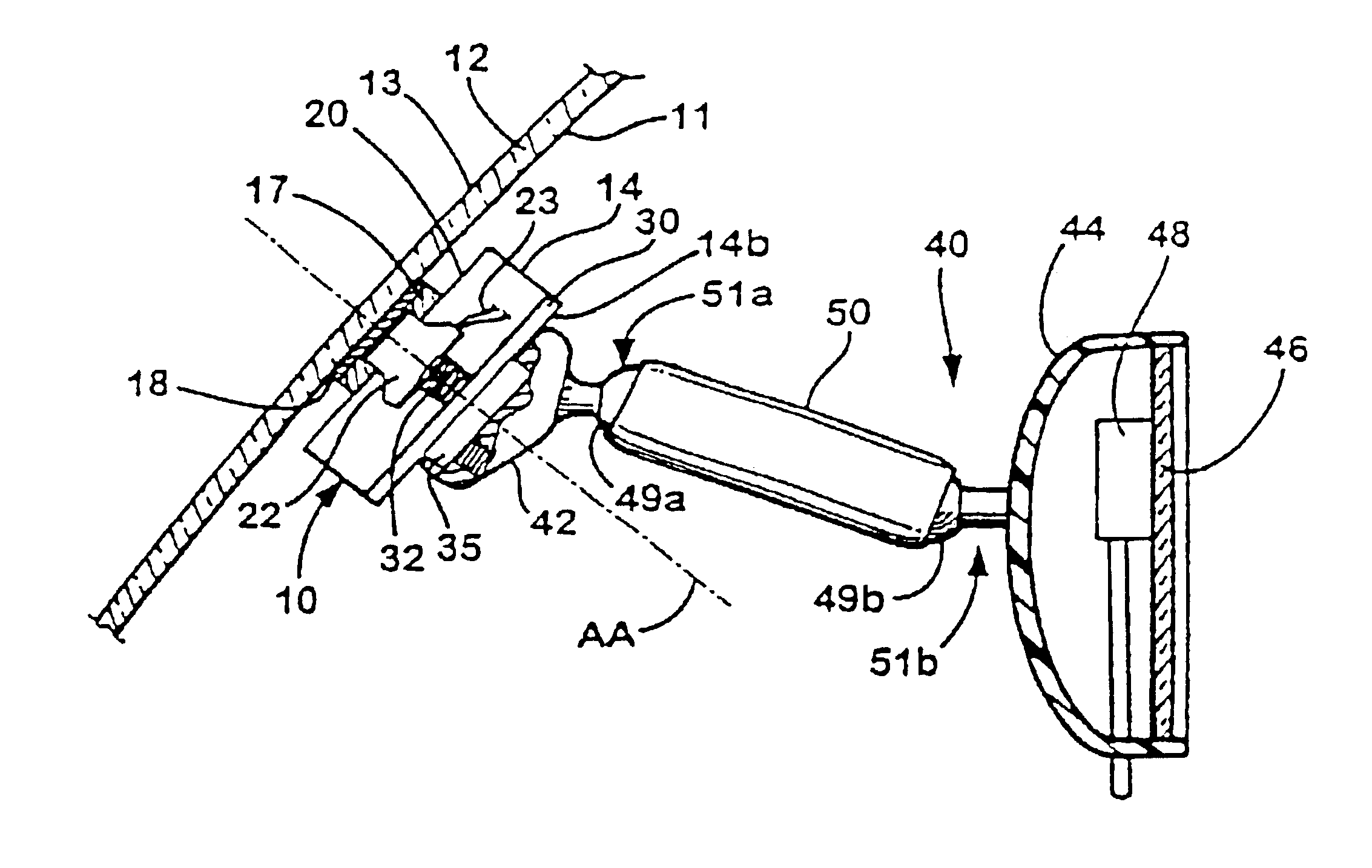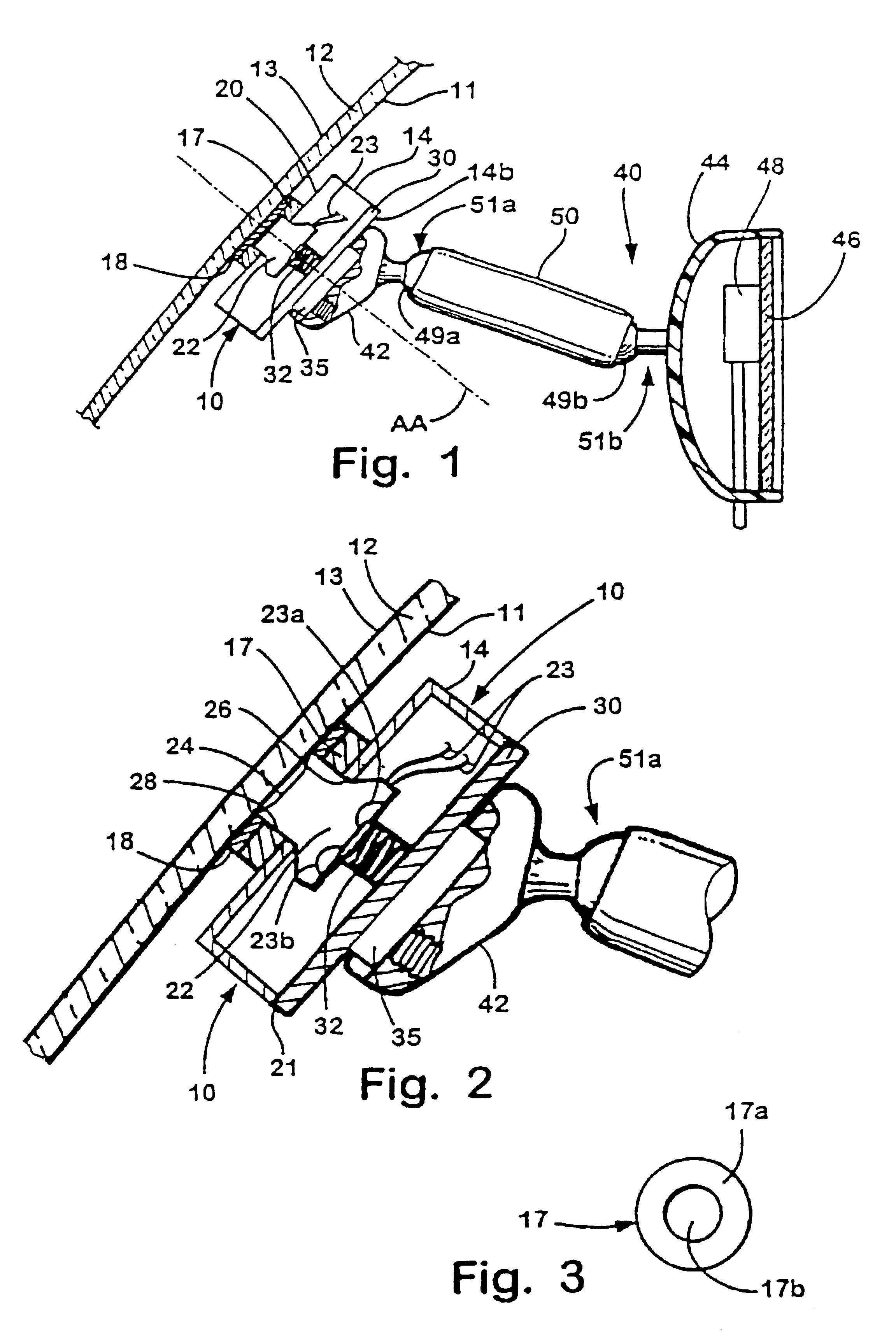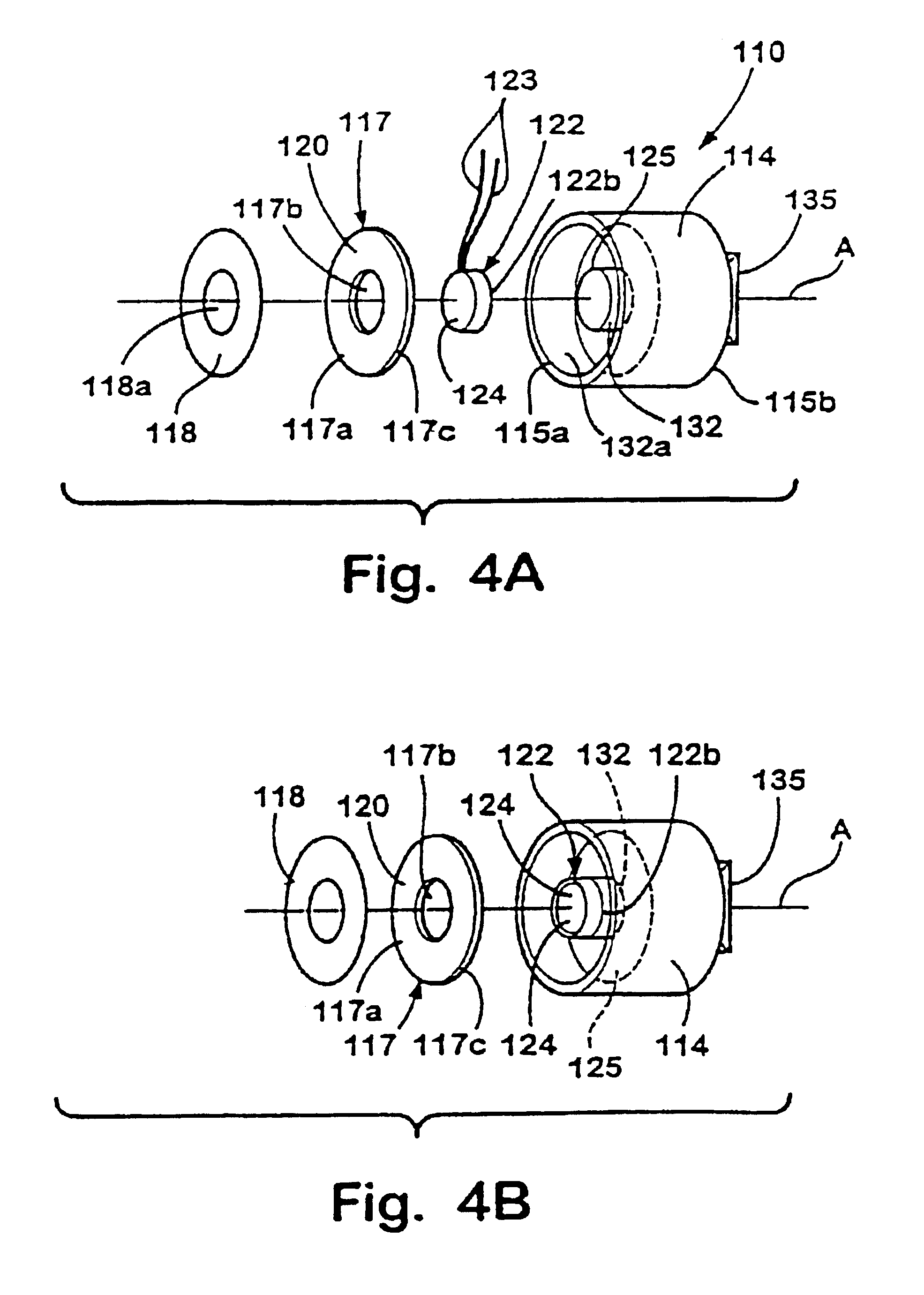Rain sensor mounting system
a technology for mounting systems and sensors, applied in the field of rearview assemblies of vehicles, can solve the problems of affecting the appearance and styling of vehicles, affecting the stability of the vehicle, and affecting the operation of the vehicle, so as to achieve the effect of greater flexibility and greater range of motion of the mirror assembly housing
- Summary
- Abstract
- Description
- Claims
- Application Information
AI Technical Summary
Benefits of technology
Problems solved by technology
Method used
Image
Examples
Embodiment Construction
[0032]Referring to FIGS. 1 and 2, a rain sensor module assembly 10 of the present invention is shown mounted to the inner surface 11 of a windshield 12. Rain sensor module assembly 10 is positioned on inner surface 11 of windshield 12 for detecting moisture, such as rain droplets, on the outer surface 13 and, optionally, on inner surface 11 of windshield 12, as will be more fully explained below.
[0033]Rain sensor module assembly 10 is mounted to inner surface 11 of windshield 12 by a rain sensor mounting button 17. Rain sensor mounting button 17 is preferably adhered to inner surface 11 of windshield 12 by a layer 18 of adhesive such as an epoxy, a polyvinyl butyral, a urethane, or a silicone adhesive material or the like. In the illustrated embodiment rain sensor mounting button 17 is circular in shape having a solid annular outer portion 17a and inner hollow open central portion 17b. Solid portion 17a of rain sensor mounting button 17 may comprise a polymer material, such as an en...
PUM
 Login to View More
Login to View More Abstract
Description
Claims
Application Information
 Login to View More
Login to View More - R&D
- Intellectual Property
- Life Sciences
- Materials
- Tech Scout
- Unparalleled Data Quality
- Higher Quality Content
- 60% Fewer Hallucinations
Browse by: Latest US Patents, China's latest patents, Technical Efficacy Thesaurus, Application Domain, Technology Topic, Popular Technical Reports.
© 2025 PatSnap. All rights reserved.Legal|Privacy policy|Modern Slavery Act Transparency Statement|Sitemap|About US| Contact US: help@patsnap.com



